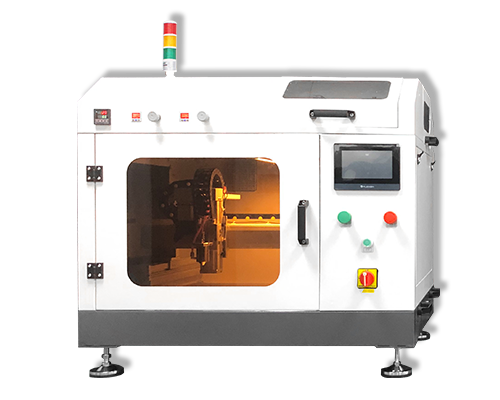Fuel Cells Catalyst Coating
The ultrasonic spraying system has significant advantages in the preparation of fuel cell catalyst coatings, especially in the catalyst layer formation process of membrane electrode assemblies (MEA), where this technology plays a key role. The following is a detailed analysis of the advantages:
1. Improve catalyst utilization efficiency
The ultrasonic spraying system can accurately control the spraying amount of catalyst powder, ensuring that the catalyst is evenly distributed on the surface of the electrolyte membrane, avoiding the accumulation or waste of catalyst that may occur in traditional methods. This uniform distribution not only improves the utilization rate of the catalyst, but also enables each catalyst particle to fully exert its catalytic effect, thereby enhancing the overall performance of the fuel cell.
2. Ensure electrode uniformity and consistency
The uniformity and consistency of the catalyst layer are crucial for the performance of fuel cells. The ultrasonic spraying system, through its high-precision spraying technology, can form a uniform and highly catalytically active coating on the surface of the electrolyte membrane. This uniformity ensures consistent performance of the electrode during the electrochemical reaction process, reducing performance fluctuations caused by uneven coating.
3. Improve the power density and stability of fuel cells
Due to the uniformity and efficient catalytic activity of the catalyst layer, fuel cells can more fully utilize fuel and oxygen during electrochemical reactions, generating more electrical energy. This directly increases the power density of fuel cells, enabling them to output more electrical energy per unit volume or unit mass. Meanwhile, a uniform catalyst coating also helps to improve the stability of fuel cells and extend their service life.
4. Other advantages
- Environmental protection and energy conservation: Ultrasonic spraying technology usually does not require the use of large amounts of organic solvents or high-pressure gases, reducing environmental pollution. In addition, this technology has low energy consumption, which helps to achieve green and energy-saving production.
- Strong adaptability: The ultrasonic spraying system is suitable for various types of catalyst materials and electrolyte membranes, and has a wide range of applicability. This enables the technology to meet the preparation needs of different types of fuel cells.
- Easy to control: The operation of the ultrasonic spraying system is relatively simple, and the spraying parameters such as frequency, amplitude, and spraying time are easy to adjust and control. This helps to achieve precise control of coating thickness, improve production efficiency and product quality.
In summary, the ultrasonic spraying system has multiple advantages in the preparation of fuel cell catalyst coatings. These advantages not only improve the performance and stability of fuel cells, but also promote the further development and commercial application of fuel cell technology. With the continuous advancement and improvement of technology, it is believed that ultrasonic spraying systems will play a more important role in the field of fuel cells.
About Cheersonic
Cheersonic is the leading developer and manufacturer of ultrasonic coating systems for applying precise, thin film coatings to protect, strengthen or smooth surfaces on parts and components for the microelectronics/electronics, alternative energy, medical and industrial markets, including specialized glass applications in construction and automotive.
Our coating solutions are environmentally-friendly, efficient and highly reliable, and enable dramatic reductions in overspray, savings in raw material, water and energy usage and provide improved process repeatability, transfer efficiency, high uniformity and reduced emissions.
Chinese Website: Cheersonic Provides Professional Coating Solutions


